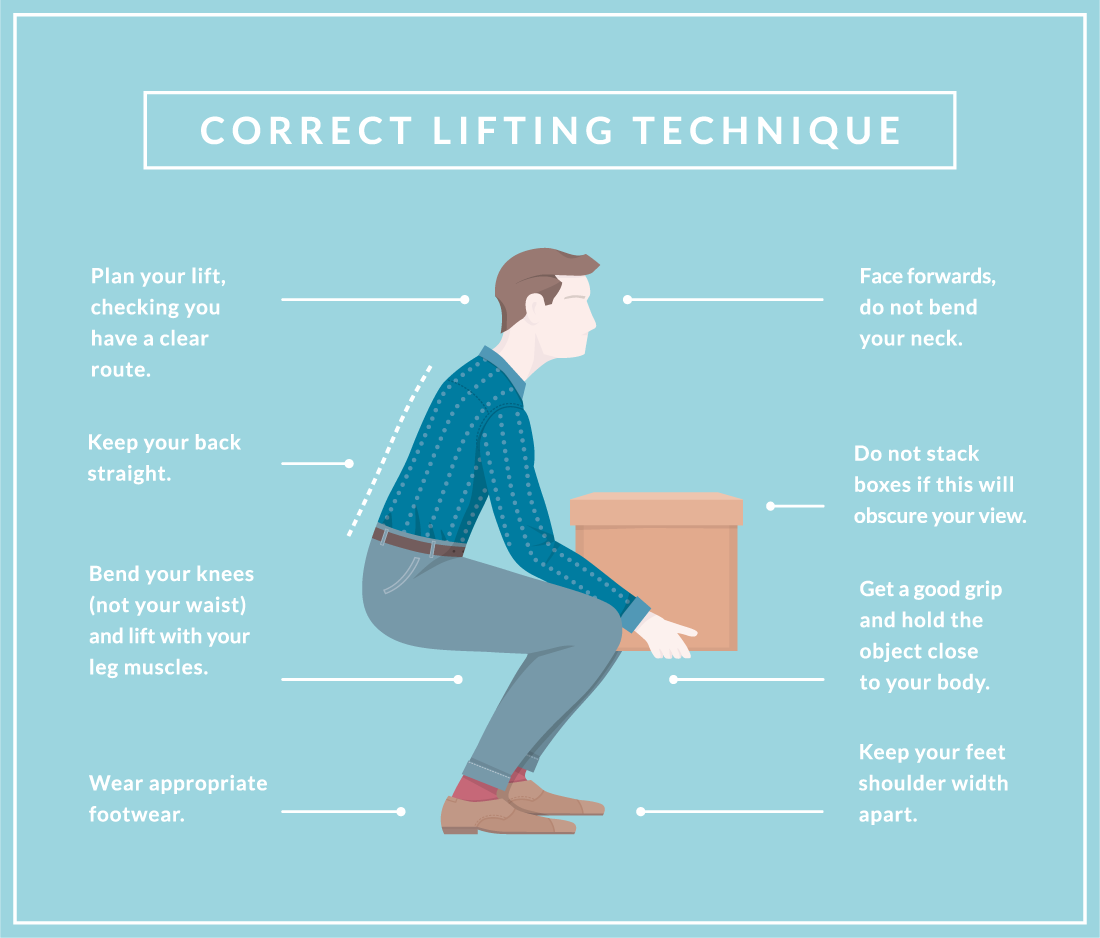Safe Lifting Techniques at Work
Safe lifting techniques should be stressed by all workplaces, but are commonly overlooked. Most people just want to finish the job quickly, even if that means moving heavy objects in unsafe ways.
In doing so, workers can become injured and have to miss work for extended periods of time.
Safe lifting techniques should be incorporated for all workplaces because back and lifting injuries are a leading cause of missed workdays. According to 2014 data from the Bureau of Labor Statistics, overexertion in lifting or lowering caused an average of 12 days away from work (30 percent more than the overall average), and was the fifth-highest rate of days missed, per 10,000 full-time workers.
A few ways to help encourage safe lifting techniques may be to start each day off with a stretching program to help acclimate the body or to post signage around your facility reminding your workers to lift safely.
Even if you don’t lift heavy objects often at work, you are still susceptible to an injury. You can strain your back lifting something as light as a screwdriver if you are not careful.
Safe Lifting Techniques
Prevention and planning are perfect solutions for most hazard abatement in the workplace. With proper safety training and the use of these safe lifting techniques, your team should be able to greatly reduce the risk of back and lifting injures.
Before lifting, assess what it is you are lifting and where it is going. Recognize how heavy the object is and determine if you can lift it by yourself. Never hesitate to ask for help if it is too heavy.
Make sure to check the pathway you are taking to your final destination. There should not be any trip hazards or debris in your path.
To safely lift the object, get as close to the object as possible. This will create more leverage for you and less strain on your muscles.
Next, position your feet shoulder-width apart and angle one foot slightly forward for better balance.
When you go to bend down for the object, keep your back straight and use your legs and hips to lower yourself to the object. Never bend at the waist because this will cause immediate strain on your lower back.
As you bend down to pick up the object, use the hand of the leg that is angled forward and place it on the side of the object furthest from you.
After you have a firm, comfortable grip, tighten your core and focus on keeping a straight back as you lift the object with your legs and hips. Looking forward will help keep your back straight and extend your legs. Always remember to keep the object close to your body.
Things to Avoid
Just as important as following safe lifting techniques, avoiding unsafe behavior can help you to avoid injury and to advise others on how to do the same.
Here are a few things to avoid while lifting:
- Never hold your breath while you lift an object. Exhaling out when lifting an object is the proper technique to use.
- When carrying an object, do not bend or twist at the waist. If you need to turn, slowly turn with your feet.
- Don’t use a partial grip on an object. Always use two hands!
- Never obstruct your vision with an object you are carrying. Keep the object at mid-section level, from the mid-thigh to mid-chest. This is your “power zone.”
- Never forget to wear your personal protective equipment, such as gloves for grip or shoulder pads to cushion the load.
By practicing these safe lifting techniques, and avoiding bad lifting habits, you and your staff can stay health and on the job. Since lifting injuries are so common, and detrimental to productivity, the importance of safe lifting techniques cannot be understated and should be treated seriously in every industry.
SafetySign.com does not recommend or specify the use of a specific safety sign because it does not have knowledge of the hazard(s) our customers are identifying. It is the customer’s sole responsibility to identify the hazard(s) that may be present and select one or more signs (stock or custom) that accurately identify their specific hazard(s) and complies with any applicable federal, state or local laws or regulations, any worksite specific rules or regulations and/or any applicable safety standards (including, without limitation, ANSI and/or OSHA standards). SafetySign.com disclaims any and all liability (excluding liability for our Product Warranty contained in our Terms and Conditions) for any sign selected by a customer and shall not be responsible for any personal injury or property damage resulting from the use of signs purchased from it or for the independent interpretation made of any applicable federal, state or local laws or regulations, any worksite specific rules or regulations, and/or any applicable safety standards (including, without limitation, ANSI and/or OSHA standards). Customer shall indemnify and hold SafetySign.com and its corporate parent and its officers, directors and affiliates harmless from and against any and all claims, loss or expense (including attorneys’ fees) arising from or related to the purchase and use by customer or any third party of any sign purchased by customer from SafetySign.com.

